Leaderboard
Popular Content
Showing content with the highest reputation on 05/23/2018 in Posts
-
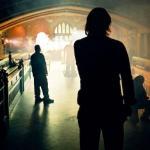
Blackmagic Pocket Cinema Camera 4K
tweak and 2 others reacted to John Brawley for a topic
I'll put my hand up too and say I never use AF and only sometimes use IS. IS is great on static shots, but problematic on moving / tracking shots. Just like gimbals, with many "tells" for bad operating. But I'm not everyone. JB3 points -

Golden rules on blocking the actors!
Thomas Hill and one other reacted to John Brawley for a topic
Well you're talking about two elements of actor craft here. Acting performance and then staging (blocking). Are you worried about the actors performance or how they're blocking and staging the scene ? Or both ? For sure they're related, but in my view (and I'm a DP not a director) actors want to be lead through a conversation about blocking. It's a negotiation. But there's nothing worse than demonstrating by example or showing them another scene or being literal. Blocking is one of the most mis-understood elements of the craft of filmmaking,. And no one ever says "great staging" or "amazing blocking" when talking about a film they like. They're talk about editing, performance, the photography, the design...but never ever blocking. It takes a while tor realise how powerful a tool this can be and it really SHOULD be the director that drives these choices. From staging / Blocking comes coverage. And it factors hugely in performance. Normally I prefer to have the set cleared, you listen to the actors say the words and then you block. This is a very very crucial and creative time for the director and actor. The director may have really specific ideas about how they want the scene to stage and move through it's dramatic beats. Or you might be looking for them right there and then in that moment and you work WITH the staging as you block to try and labour, extract and bring these beats into the light. Good actors will be able to adapt their blocking as you talk ab out beats that are important. They find ways to "physicalise" what you're asking for emotionally and dramatically. If the issue the OP has here is just "overacting" my best would be to ask the actors to "do less" or "scale it back". As an experiment sometimes it's fun to run the scene without speaking the lines. Just do it in body language. Try a rehearsal like that. Then tell them to do the silent rehearsal with as little body language as possible. There are some great and obvious examples of blocking WITH CAMERA (hey I'm a DP) and how the actor blocking is DRIVING what you do with a camera. here https://www.youtube.com/watch?v=GfqD5WqChUY and here https://www.youtube.com/watch?v=2THVvshvq0Q https://www.youtube.com/watch?v=gT3FZdMqtVk https://medium.com/@dalonsoperez/mad-max-silhouette-and-clear-staging-fd67eda4b4d9 JB2 points -
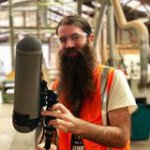
Vloggers aren't crazy (speed and control of film-making)
Nathan Gabriel and one other reacted to IronFilm for a topic
As soon as the HDSLR Revolution hit in 2008 that was the start of the death bell ringing for any ultra low budget indie film to ever shoot on film. Then when the BMCC launched in 2012 that was the final strokes of the clock counting down until it was time over for even more "mid budget" indie level films. This is not even counting the impact RED and ARRI had, and honestly today an indie film can totally shoot on a RED or ARRI camera if they really really want to. I've worked on plenty of ultra low budget films using a RED or ARRI. Of course the other impact RED and ARRI had, is as the bulk of the high end productions switched over to them and away from film, that then dried up the source of work for the film processing labs. Once the last film processing lab is gone in your country (like is the case in New Zealand. Park Road Post closed its film post-production facilities in 2013, that is a looooong time ago!) then it becomes very very hard to produce a film film. At least in the USA they're massive enough I think there is still a couple of commercial scale ones left. Another big impact upon indies this switch from film to digital at the high end is that in the past indie filmmakers would beg/borrow/steal/scrounge the ends of rolls of film, and thus at least have the raw beginning materials to make their film with (but have to work around the hassle of having incomplete rolls of film as they're short ends). Which would help bring down costs for them. Of course today there is much less opportunity to source these, as there simply are less of these film ends around. I looked up Jim's films: The Limits of Control (2009 released, so perhaps actually filmed a couple of years earlier in 2007? Maybe, could be more, could be less), then Only Lovers Left Alive (2013 release, but again the actual production would have been earlier). First of those two was filmed with an ARRI film camera, the 2nd of those two with an ARRI digital camera. And those two dates aligned up with my earlier comments about the timing of the transition. Am sure of that. An old RED ONE is practically free to rent. Heck even say a Scarlet MX (maybe even Dragon) you can get owner OPs throwing it in extra for nothing at all. Even at the highest end of RED cameras, they've always been cheaper than the high end latest ARRI digital cameras.2 points -
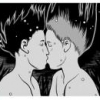
Lenses
Gregormannschaft and one other reacted to Matt Kieley for a topic
I DP'd a short recently. This was my first real test of my Fujinon-TV lenses on the BMMCC/BMPCC. The director/writer/editor added a sepia filter instead of the look we had talked about (I think maybe he just didn't know how to grade the log footage) so I put together this reel with my own grading.2 points -
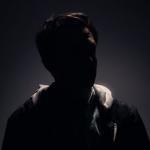
Shot a music video with the Letus Anamorphix
kye reacted to covertfilm for a topic
Hey everyone, A music video I directed just released this week and I thought I'd share it! We shot in an old salon & a retro pinball collection and we used a bunch of aputure lights and rented a 'Letus Anamorphix' adapter which was quirky, but gave the look that I wanted in the end. We shot on an A7s (mark 1) into a blackmagic 4k recorder/monitor. I guess the main oddity of the adapter is that the aspect ration wasn't truly a 1.33x squeeze. It seemed to vary depending on where I had the 'focus ring'. So i ended up adjusting the clips scale by hand in the final grade. The actors were the lead singer and his girlfriend (who is a non-actor), but I'm really proud of how they just went for it. YOUTHFOOL - Late Nights: https://youtu.be/PFc0JFBGJ8U Any thoughts on the look of the adapter? Has anyone else used it before? - Luke1 point -
The problem hasn't been so much in the delay but in the massive lack of communication, which despite the rather sporadic updates and all the complaints about communication it never seems to improve.1 point
-
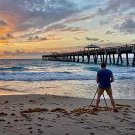
Fuji does it again
Kisaha reacted to Trek of Joy for a topic
The XA5 has the same specs, and since this is essentially a XA5 with a viewfinder, its not surprising. Its their entry level body, Fuji went low spec with the processor on the XA5. The XA bodies haven't seen any significant FW updates compared to the XPro and XT lines, I doubt this gets anything beyond bug fixes. I agree it should have be marketed as something like Panny's 4k photo mode, not video. The side hinge is interesting, a first for the X-mount line. Hopefully it gets adopted across the line. Chris1 point -
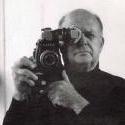
DJI Ronin-S VS. the Zhiyun Crane V2?
MurtlandPhoto reacted to Gregormannschaft for a topic
Unless there are performance related benefits to the Ronin S I'm not if an improvement in build quality is really all that exciting. What I'd switch for is better movement, I'd love for them to somehow move it away from the stiff, occasionally robotic movement of most 3-axis gimbals and introduce a little sway. If they manage to do that I'll switch.1 point -

Fast apertures on the GH5 = Full frame
tupp reacted to Trek of Joy for a topic
I'm in that camp, the B85 has swirly cat-eye bokeh wide open - especially when the background is trees/foliage. I much prefer the FE 85. The B135 does the same thing, hate it. The B25 and B18 OTOH are flat out awesome. I have the FE 28 and 85, and sold the Batis 25/85 to get them. The Huff comparison demonstrates exactly what some make so overly complicated - play the equivalence game with aperture/FL and you get the exact same image across various sensor sizes. Though Huff's fanboy "Olympus has better rendering" with a drill shot is just silly. FF's advantage over m43 is even with a moderate aperture lens like a 1.8, you get DOF that requires pretty expensive m43 glass. With the cost of top shelf m43 and aps-c bodies hitting $2000, you really have to evaluate the entire system and your needs because the difference in price isn't that much - especially if you're buying f/1.8's in FF-land and faster glass in m43-land. Used prices also level the playing field quite a bit. I saw an a9 for $2600, a7r3's are dropping to about that level too. Other bodies are far less. If you're shopping Sony, the F/4 zooms have been around awhile and so on. Cheers Chris1 point -

Vloggers aren't crazy (speed and control of film-making)
Nathan Gabriel reacted to kye for a topic
My reference to $5M was actually about camera equipment, and was around the point that anyone using a >$5M camera setup would think of the entire DSLR revolution in the same way that this board seems to talk about vloggers.. basically as spoilt whiney teenagers You're right that the situations I describe don't have anything to do with budget. You can shoot in a highly controlled environment with a phone, a couple of desk lamps and a wired lav mic if you wanted to. On low budget films as soon as you don't pay people minimum wage you can get away with spending almost nothing (except lots of social capital!). I co-produced films at $2K and $5K that were absolutely situation A with months of pre-production, >20 cast/crew, and one of them had >10,000 person-hours in it (I didn't estimate the other). I understand that my post is a huge simplification, but I think the principle stands. As someone who shoots at the C/D end of things its amusing/frustrating when I mention a challenge I have in shooting my home videos and the reply is to add crew (take extra people on my holiday), to multiply the weight of my rig by three (or more!), or to get my family to repeat parts of the holiday over and over until I get a shot with the right lighting! This topic is an attempt to get people to understand that there is a huge variety in film-making outside of the niches they seem to live in. I was going to say this! Film is too slow for most commercial shoots, and for indie it is too expensive!!! I think I heard somewhere that it's cheaper to rent a RED than to shoot on film these days?1 point -
Fast apertures on the GH5 = Full frame
Timotheus reacted to KnightsFan for a topic
No, we were talking about pixel vignetting, which is caused by pixels being recessed. Oblique rays of light get occluded by the "rim" of the pixel. The farther from the center of the image, the more oblique the rays that strike that pixel. Thus, more light is occluded by the "rim" at the corners which causes vignetting. My thought was that if you simply take a design and scale it down, none of the angles will change. So the light rays passing through a 50mm on full frame will have the same angles as they would through a 25mm on MFT, if measured at corresponding points on the sensors. Now, I just did a back-of-the-envelope calculation that implies that I was wrong, since we are measuring at equivalent DOF, which interestingly makes the diameter of the aperture equal. (Maybe that's obvious to all of you, but I found it interesting). But I don't know enough about optics to be sure that any of my thought process is correct! True! That is why Andrew compared a 17.5mm f0.95 to a 35mm f2.0. Halving the focal length requires an extra two f-stops wider aperture for equivalent depth of field.1 point -
So far I’ve only tried follow focus with my X-T2, but I’ve previously mounted a C100mk2 (with a 24 pancake) and a D750 as well. The C100 is too tall to go into inverted mode, but it worked great otherwise.1 point
-

Fast apertures on the GH5 = Full frame
EthanAlexander reacted to Don Kotlos for a topic
I don't find it that great. First of all because especially cinematographers need to know and adjust the DoF, FoV and perspective. That means then need to know the equivalent focal length for all different cameras with different sensor sizes. If you had a m4/3 camera with the 25mm @f/1.4 and you wanted to match the image with a FF camera then you would have to use a 50mm @f/2.8. You then use ISO/NDs/Lights to control exposure. Second is because he was ad nauseam saying you cannot get the same look from different sensor sizes no matter what, even when people provided him with proof. He then he made a youtube video twisting the argument and saying exposure is everything. Lets not go back to that bitterness. Hopefully this is the last thread about it but lets say it one more time: Perspective only depends on the distance from the lens. You can then adjust the focal length/aperture for a given sensor size to get a specific FoV and DoF.1 point -
I just used my NX1 when I went to Marbella, and this camera is still great! I really wish they make another one (NX2), it's a great system! You can check out some clips here: (GammeDR, Samsung S Lens 16-50mm f2-2.8) 4K will be available when youtube's processing is done1 point
-
Fast apertures on the GH5 = Full frame
Tiago Rosa-Rosso reacted to Castorp for a topic
Worth noting that Mattias Burling made a great video about this.1 point -

Fast apertures on the GH5 = Full frame
EthanAlexander reacted to Don Kotlos for a topic
In the test that you posted, the differences that you see in perspective are because of the different distances of the camera to the face. The focal length just changes the FoV. So in order to keep the same DoF you have to move the camera at different distances, which gives rise to different perspective. If you changed the sensor size in order to match the FoV, you wouldn't have to move the camera and thus the perspective would not be different. For example were you to have a camera with a very high resolution so you can crop, you could use a wide angle lens from far away and it could give you the same compression as the 300mm.1 point -

DJI Ronin-S VS. the Zhiyun Crane V2?
MurtlandPhoto reacted to jhnkng for a topic
I have the Crane 2 (the bigger one) and I just got the new mechanical focus motor, and it’s a revelation. Being able to pull focus using the Crane 2 wheel without having rig and power a bunch of different stuff is amazing. And they’re selling the gimbal and follow focus together for like 1000 bucks AUD! Seriously, if you’re in the market for a gimbal you really need to look at the Crane 2.1 point -
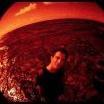
Fast apertures on the GH5 = Full frame
Tiago Rosa-Rosso reacted to Pedro for a topic
I don't agree at all. Its not about DOF. Its about distortion and compression. FF is not just about DOF and all m4/3 users should understand how optics affect the image .You can't get a 50mm look in a m4/3 with a 25mm. You can however buy a speed booster, use FF lenses to get an approximated look...1 point -

Fast apertures on the GH5 = Full frame
Nathan Gabriel reacted to anonim for a topic
Peak of image detailness and specific traits of rendering quality on Voigt m43 lenses is around f2-2.5 - see Shane Hurblut reports. Double with factor 1.5-2, that's even more shallow dof than mostly preferred value in today's cinematography (assuming super 35 as standard). Contrary, similar peak for most FF lenses is most often at about f4 or even at f8 with older generation lenses. Another question is actual quality of these Voigts lenses and corresponding values - these are lenses quite in league with Zeisses (of course, the same Cosina manufacturer) which are mostly priced higher. So, I think that comparing Voigts with cheaper FF lenses just because of simple dof mathematic is not quite correct - besides, there are also cheaper m43 solutions such as Mitakon or even SLR Magic with more players just in the game - Laowa or so. Importance of shallow dof vs easier affordability of deeper dof in real narrative experience is so often and endlessly discussed, also here in different threads. With little bit of shame for repeating it, I'd just again note that, imo and im-practice, extreme shallow dof is simply secondary effect - because totally destroying environment discernibility most often is not in the favor of story. Photography has different preferences. About light gatherings - the must calculated condition is to compare just sensors at least of the same generation, preferably of the same manufacturer. Than it will be clear that f stops provide approximately identical effects in m43, APSC or FF when sensor light reactivity is the same for all. Factors of bigger surface (FF) and lesser need for lightening power (m43) are mostly in compensating relationship.1 point -
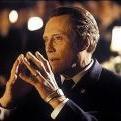
Fast apertures on the GH5 = Full frame
canonlyme reacted to EthanAlexander for a topic
You're like 90% of the way there. See if this doesn't help: The following examples would provide the exact same image, and therefore are "equivalent" assuming the camera is always in the same spot. On a M34 sensor: A 25mm 1.4 lens (and it doesn't matter if the lens was made for FF, APSC, or M43 - this is important) On a M43 sensor: A 50mm 2.8 lens, speedboosted (pretend it's a 0.5X speedbooster). (This is because you're now actually putting a 25mm 1.4 lens on the M43 once you've added the speedbooster, just like #1) On a FF sensor: A 50mm 2.8 lens - - - For #3 the ISO will have to be multiplied by the crop factor squared to get the same exposure. - - - I ran out of likes for today but this is very important for new filmmakers to know I used to think this but focal length has nothing to do with perspective, only the location of the camera and the relation to the objects in frame. The easiest way to test this is to shoot a camera at a chosen focal length, say 50mm, and then shoot from the exact same place with a lens with 2X the focal length (a 100mm lens in this example). Go into an editor and compare the full shot at 100mm to a 2X crop of the shot at 50mm. They will be the exact same image. This is no different from shooting a FF camera at 100mm and a M43 camera at 50mm. This shows how the perspective never changes if you don't move the camera, no matter what lens you're using. Seriously, try it out.1 point -
Full Frame Aesthetic?
EthanAlexander reacted to Mattias Burling for a topic
But you can never use a small sensor and achieve the same pictures as a large sensor. Thats why they are so popular. Taking a portrait with 100mm looks so much better (to most) than with a 50mm. Only problem is that on a MFT that 100mm has you backing out of the studion ruining the ascetics regarding background compression. The only difference between sensor sizes is the workable distance to fill the frame on a certain focal length. And that can be replaced with math and equivalent lenses. If you want the ascetics of FF you need to use FF. Here you see it clearly. The shooter has used an equivalent focal length and aperture. But look at the background. A smaller sensor can't give the same frame as the larger at a given distance no matter what. Even if the larger aperture makes the bokeh looking the same the windows have changed size. So again, Yes, the full frame gives the lenses an ascetic that crop sensors can't replicate and vice versa. Trying to use equivalent focal length and apertures does not help.-1 points
